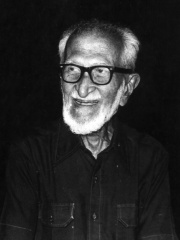
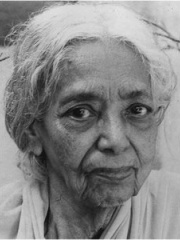
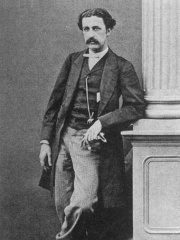
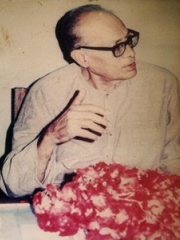
The Most Famous
BIOLOGISTS from India
This page contains a list of the greatest Indian Biologists. The pantheon dataset contains 1,097 Biologists, 5 of which were born in India. This makes India the birth place of the 25th most number of Biologists behind Latvia, and Brazil.
Top 5
The following people are considered by Pantheon to be the most legendary Indian Biologists of all time. This list of famous Indian Biologists is sorted by HPI (Historical Popularity Index), a metric that aggregates information on a biography’s online popularity.

1. Salim Ali (1896 - 1987)
With an HPI of 55.95, Salim Ali is the most famous Indian Biologist. His biography has been translated into 30 different languages on wikipedia.
Sálim Moizuddin Abdul Ali (12 November 1896 – 20 June 1987) was an Indian ornithologist and naturalist. Sometimes referred to as the "Birdman of India", Salim Ali was the first Indian to conduct systematic bird surveys across India and wrote several bird books that popularized ornithology in India. He became a key figure behind the Bombay Natural History Society after 1947 and used his personal influence to garner government support for the organisation, create the Bharatpur bird sanctuary (Keoladeo National Park) and prevent the destruction of what is now the Silent Valley National Park. Along with Sidney Dillon Ripley he wrote the landmark ten volume Handbook of the Birds of India and Pakistan, a second edition of which was completed after his death. He was awarded the Padma Bhushan in 1958 and the Padma Vibhushan in 1976, India's third and second highest civilian honours respectively. Several species of birds, Salim Ali's fruit bat, Salim Ali's dwarf gecko, a couple of bird sanctuaries and institutions have been named after him.

2. Janaki Ammal (1897 - 1984)
With an HPI of 50.97, Janaki Ammal is the 2nd most famous Indian Biologist. Her biography has been translated into 33 different languages.
Edavalath Kakkat Janaki Ammal (4 November 1897 – 7 February 1984) was an Indian botanist who worked on plant breeding, cytogenetics and phytogeography. Her most notable work involved studies on sugarcane and the eggplant (brinjal). She also worked on the cytogenetics of a range of plants and co-authored the Chromosome Atlas of Cultivated Plants (1945) with C.D. Darlington. She took an interest in ethnobotany and plants of medicinal and economic value from the rain forests of Kerala, India. She was awarded Padma Shri in 1977.

3. Robert Swinhoe (1836 - 1877)
With an HPI of 48.90, Robert Swinhoe is the 3rd most famous Indian Biologist. His biography has been translated into 22 different languages.
Robert Swinhoe FRS (1 September 1836 – 28 October 1877) was an English diplomat and naturalist who worked as a Consul in Taiwan (then known to Westerners as Formosa). He catalogued many Southeast Asian birds, and several, such as Swinhoe's pheasant, are named after him.

4. Akhtar Hameed Khan (1914 - 1999)
With an HPI of 43.18, Akhtar Hameed Khan is the 4th most famous Indian Biologist. His biography has been translated into 18 different languages.
Akhter Hameed Khan (Urdu: اختر حمید خان, pronounced [ˈəxt̪ər ɦəˈmiːd̪ xaːn]; 15 July 1914 – 9 October 1999) was a Pakistani development practitioner and social scientist. He promoted participatory rural development in Pakistan and other developing countries, and widely advocated community participation in development. His particular contribution was the establishment of a comprehensive project for rural development, the Comilla Model (1959). It earned him the Ramon Magsaysay Award from the Philippines and an honorary Doctorate of law from Michigan State University. In the 1980s he started a bottom-up community development initiative of Orangi Pilot Project, based in the outskirts of Karachi, which became a model of participatory development initiatives. He also directed many programmes, from microcredit to self-finance and from housing provision to family planning, for rural communities and urban slums. It earned him international recognition and high honours in Pakistan. Khan was fluent in at least seven languages and dialects. Apart from many scholarly books and articles, he also published a collection of poems and travelogues in Urdu.
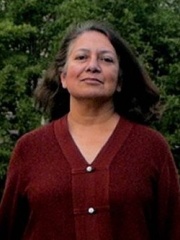
5. Sunetra Gupta (b. 1965)
With an HPI of 28.32, Sunetra Gupta is the 5th most famous Indian Biologist. Her biography has been translated into 22 different languages.
Sunetra Gupta (born 15 March 1965) is an Indian-born British infectious disease epidemiologist and a professor of theoretical epidemiology at the Department of Zoology, University of Oxford. She has performed research on the transmission dynamics of various infectious diseases, including malaria, influenza and COVID-19, and has received the Scientific Medal of the Zoological Society of London and the Rosalind Franklin Award of the Royal Society. She is a member of the scientific advisory board of Collateral Global, an organisation which examines the global impact of COVID-19 restrictions. Gupta is also a novelist and a recipient of the Sahitya Akademi Award.
People
Pantheon has 5 people classified as Indian biologists born between 1836 and 1965. Of these 5, 1 (20.00%) of them are still alive today. The most famous living Indian biologists include Sunetra Gupta. The most famous deceased Indian biologists include Salim Ali, Janaki Ammal, and Robert Swinhoe.
Living Indian Biologists
Go to all RankingsDeceased Indian Biologists
Go to all RankingsSalim Ali
1896 - 1987
HPI: 55.95
Janaki Ammal
1897 - 1984
HPI: 50.97
Robert Swinhoe
1836 - 1877
HPI: 48.90
Akhtar Hameed Khan
1914 - 1999
HPI: 43.18
Overlapping Lives
Which Biologists were alive at the same time? This visualization shows the lifespans of the 4 most globally memorable Biologists since 1700.

